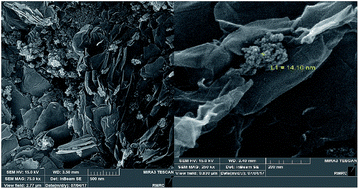Rapid preconcentration of palladium and rhodium using magnetic graphene oxide/silicon dioxide nanocomposite prior to FAAS determination
Abstract
The present study was conducted to evaluate the capability of magnetic graphene oxide/silicon dioxide nanocomposites as a novel adsorbent for the separation and preconcentration of trace amounts of Pd(II) in the presence of Rh(III) ions prior to FAAS determination. The results indicated that Pd(II) and Rh(III) ions were quantitatively adsorbed on the adsorbent at pH values of 7–8. Under empirical conditions, the obtained linear calibration curves of Pd(II) and Rh(III) ranged from 6.0 to 3000 ng mL−1 and 3.0 to 2500 ng mL−1, respectively. The detection limits based on 3Sb/m were found to be 1.2 and 0.7 ng mL−1, respectively, for the palladium and rhodium ions. Seven repeated determinations of 0.5 μg mL−1 of Pd(II) and Rh(III) ions in the real solution showed relative standard deviations of 2.2% and 1.9%, respectively. The maximum adsorption capacity of Pd(II) and Rh(III) ions were 41.4 and 35.0 mg g−1, respectively. The amounts of Pd(II) and Rh(III) ions in the road dust samples were reported within the range of 0.19–0.25 and 0.38–0.44 μg g−1, respectively.



 Please wait while we load your content...
Please wait while we load your content...